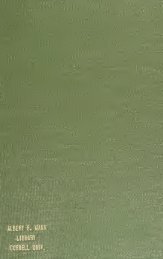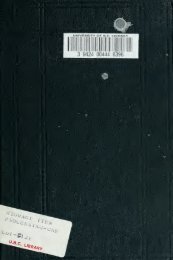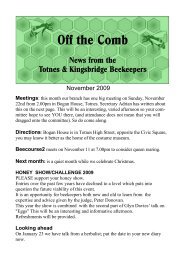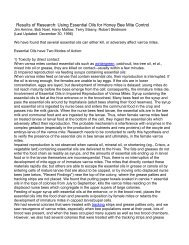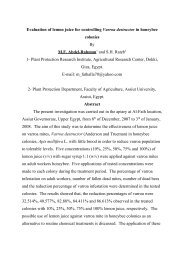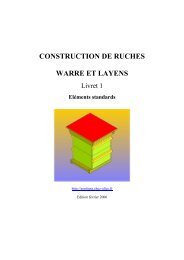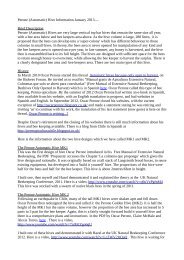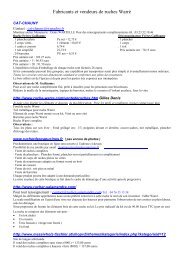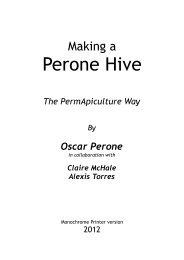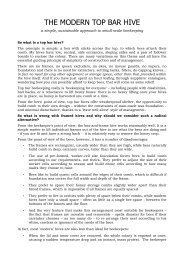Create successful ePaper yourself
Turn your PDF publications into a flip-book with our unique Google optimized e-Paper software.
Observation<br />
Explanation<br />
Depending on <strong>the</strong> altitude and<br />
<strong>the</strong> spring temperature, from<br />
<strong>the</strong> end of April until mid -May,<br />
<strong>the</strong>re is little activity even in<br />
strong colonies and on days<br />
favorable to harvest, except<br />
perhaps during <strong>the</strong> early part of<br />
<strong>the</strong> afternoon.<br />
This annual observation, which at low altitude occurs<br />
naturally earlier than in areas of higher altitude, is due<br />
to <strong>the</strong> fact that at this time <strong>the</strong> bees which have overwintered<br />
die quite rapidly. The bees one sees flying in<br />
<strong>the</strong> early afternoon are those young bees that will<br />
later become foragers. (From May onwards <strong>the</strong> observations<br />
made at <strong>the</strong> hive entrance must be supported<br />
by those made at <strong>the</strong> building frame).<br />
The orientation flights of<br />
young bees are qf varying<br />
intensity depending on <strong>the</strong><br />
colony.<br />
These flights enable one to determine with confidence<br />
<strong>the</strong> colonies that will be completely developed by <strong>the</strong><br />
commencement of <strong>the</strong> main flow. It is not worth<br />
maintaining colonies from which one can not except<br />
a harvest. One can use <strong>the</strong>ir brood and <strong>the</strong>ir bees by<br />
sharing <strong>the</strong>m between <strong>the</strong> colonies of midstrength;<br />
this should be done ten days before <strong>the</strong> main flow at<br />
<strong>the</strong> latest. This only applies to healthy colonies.<br />
A large number of bees die sud- The bees have been poisoned by sprayed or powder<br />
denly. Fights take place inside insecticides.<br />
<strong>the</strong> hive and at <strong>the</strong> entrance.<br />
In <strong>the</strong> morning scraps of wax The colony is breaking down worker combs to replace<br />
are found in and in front of <strong>the</strong> <strong>the</strong>m by drone cells. The cappings and <strong>the</strong> parts of<br />
hive entrance. During <strong>the</strong> day rotten comb are also disposed of.<br />
bees flyaway carrying wax particles<br />
in <strong>the</strong>ir jaws.<br />
Very early in <strong>the</strong> morning one It is most likely that <strong>the</strong> bottom board was not comfinds<br />
wax-moth caterpillars in pletely cleared of wax in <strong>the</strong> spring. Amongst all this<br />
front of <strong>the</strong> hive entrance. waste, <strong>the</strong> bees can only fight <strong>the</strong>ir bitter enemy with<br />
During <strong>the</strong> day some of <strong>the</strong> difficulty, for <strong>the</strong> particles of wax on which <strong>the</strong> waxbees<br />
drag wax-moth threads moth larvae feeds are covered by a fine cocoon.<br />
and cocoons onto <strong>the</strong> alighting<br />
board.<br />
31



